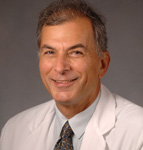
Dr. Young is the Chief of the Hematology Branch of the National Heart, Lung and Blood Institute and the Director of the Trans-NIH Center for Human Immunology, Autoimmunity and Inflammation. His professional career of over 30 years has been at the Bethesda campus of the National Institutes of Health. Dr. Young’s research is in hematopoiesis, with an emphasis on the human and diseases of bone marrow failure, particularly aplastic anemia. In his laboratory, there is a wide range of efforts in this area, from basic biology, as for example studies of human parvovirus B19 and stem cell mitochondrial DNA, to pure clinical research, including interventional trials in patients who are acutely ill with severe pancytopenia. Dr. Young’s work work also includes epidemiology and has been highly collaborative, involving other NIH institutes as well as many academic investigators in the United States and other countries. He has have published over 350 original research articles, more than 150 book chapters and review articles, and is the editor or co-editor of ten monographs, including a textbook of hematology. Many of his papers have been cited hundreds of times. In his capacity as Hematology Branch Chief, Dr. Young supervises half a dozen Section Chiefs which include the current editor of Blood and the President of the American Society for Blood and Marrow Transplantation. Dr. Young’s laboratory has trained several dozens of post-doctoral fellows, many of whom now occupy positions as professors and department chairman in Europe and Asia. His clinic is noted to be the largest center nationwide for the study of bone marrow failure. The therapeutic advances developed there have changed the standard of care for patients with aplastic anemia, myelodysplastic syndrome, paroxysmal nocturnal hemoglobinuria, and have introduced many new approaches to the treatment of these serious blood diseases
